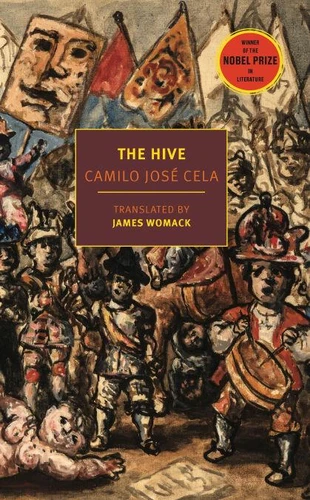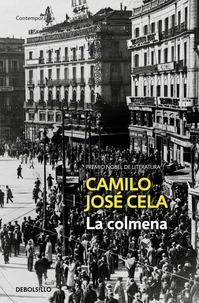Prix Nobel de Littérature
The Hive
Par : ,Formats :
Disponible dans votre compte client Decitre ou Furet du Nord dès validation de votre commande. Le format ePub protégé est :
- Compatible avec une lecture sur My Vivlio (smartphone, tablette, ordinateur)
- Compatible avec une lecture sur liseuses Vivlio
- Pour les liseuses autres que Vivlio, vous devez utiliser le logiciel Adobe Digital Edition. Non compatible avec la lecture sur les liseuses Kindle, Remarkable et Sony
- Non compatible avec un achat hors France métropolitaine
 , qui est-ce ?
, qui est-ce ?Notre partenaire de plateforme de lecture numérique où vous retrouverez l'ensemble de vos ebooks gratuitement
Pour en savoir plus sur nos ebooks, consultez notre aide en ligne ici
- Nombre de pages296
- FormatePub
- ISBN978-1-68137-616-5
- EAN9781681376165
- Date de parution07/03/2023
- Protection num.Adobe DRM
- Taille2 Mo
- Infos supplémentairesepub
- ÉditeurNYRB Classics
Résumé
Complete and uncensored in English for the very first time, a fragmented, daringly irreverent depiction of decadence and decay in Franco's Spain written by the 1989 winner of the Nobel Prize in Literature. The translator Anthony Kerrigan compared Camilo José Cela, the 1989 winner of the Nobel Prize in Literature, to Louis-Ferdinand Céline and Curzio Malaparte-all "ferocious writers, truculent, badly spoken, even foulmouthed." However provocative and disturbing, Cela's novels are also flat-out dazzling, their sentences as rigorous as they are riotous, lodging like knives in the reader's mind.
Cela called himself a proponent of "uglyism, " of "nothingism." But he has the knack, to quote another critic, Américo Castro, of deploying those "nothings and lacks" to construct beauty. The Hive is set over the course of a few days in the Madrid of 1943, not long after the end of the Spanish Civil War, when the regime of General Francisco Franco was at its most oppressive. The book includes more than three hundred characters whose comings and goings it tracks to hypnotic effect.
Scabrous, scandalous, and profane, The Hive is a virtuosic group portrait of a wounded and sick society.
Cela called himself a proponent of "uglyism, " of "nothingism." But he has the knack, to quote another critic, Américo Castro, of deploying those "nothings and lacks" to construct beauty. The Hive is set over the course of a few days in the Madrid of 1943, not long after the end of the Spanish Civil War, when the regime of General Francisco Franco was at its most oppressive. The book includes more than three hundred characters whose comings and goings it tracks to hypnotic effect.
Scabrous, scandalous, and profane, The Hive is a virtuosic group portrait of a wounded and sick society.
Complete and uncensored in English for the very first time, a fragmented, daringly irreverent depiction of decadence and decay in Franco's Spain written by the 1989 winner of the Nobel Prize in Literature. The translator Anthony Kerrigan compared Camilo José Cela, the 1989 winner of the Nobel Prize in Literature, to Louis-Ferdinand Céline and Curzio Malaparte-all "ferocious writers, truculent, badly spoken, even foulmouthed." However provocative and disturbing, Cela's novels are also flat-out dazzling, their sentences as rigorous as they are riotous, lodging like knives in the reader's mind.
Cela called himself a proponent of "uglyism, " of "nothingism." But he has the knack, to quote another critic, Américo Castro, of deploying those "nothings and lacks" to construct beauty. The Hive is set over the course of a few days in the Madrid of 1943, not long after the end of the Spanish Civil War, when the regime of General Francisco Franco was at its most oppressive. The book includes more than three hundred characters whose comings and goings it tracks to hypnotic effect.
Scabrous, scandalous, and profane, The Hive is a virtuosic group portrait of a wounded and sick society.
Cela called himself a proponent of "uglyism, " of "nothingism." But he has the knack, to quote another critic, Américo Castro, of deploying those "nothings and lacks" to construct beauty. The Hive is set over the course of a few days in the Madrid of 1943, not long after the end of the Spanish Civil War, when the regime of General Francisco Franco was at its most oppressive. The book includes more than three hundred characters whose comings and goings it tracks to hypnotic effect.
Scabrous, scandalous, and profane, The Hive is a virtuosic group portrait of a wounded and sick society.

















